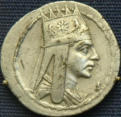

Armenian Jerusalem




The little children sit enthralled, watching with baited breath the colorful
biblical figures pirouette around the flannel-covered display board perching on
its makeshift tripod.
The story being depicted in the 2D diorama is familiar to them: the Three Wise Men in pursuit of the elusive Star of Bethlehem. But the animation, created by the imposing pastor with the sonorous voice, is an altogether new experience for the motley Sunday class, of which I am one. We can only gape open-mouthed, and keep coming back for more, half a dozen rowdy children from the Armenian Quarter, guests of the Evangelical church. It is 1946, a brief spell before all hell breaks loose and the bombs start falling on our beloved Old City of Jerusalem in the first major Arab-Jewish conflagration. We know hardly more than the pastor's name, Jamil Chamichian, this magical story-teller who, like his Savior, we learned later, had been a carpenter in a neighboring country. His ancestors had hailed from the distant land of the Peacock Throne but had been expelled and forced to find refuge elsewhere. Among the displaced group was Jurjy Chamichian, the man who had been crowned the "king of the pistachios" for his expertise in cultivating the tree. His green thumbs were known to coax copious harvests of nuts from even the most bashful tree. And when he and his people fled Persia, they took their precious pistachio saplings with them. The refugees settled in Ainteb, Turkey, in what they thought was a safe haven, but it proved an illusion: their descendants were forced to flee again, and this time seek succor in Jerusalem and Aleppo: how many remain alive in that devastated, mournful city in Syria remains unknown. Jamil's daughter Ani picks up the tale of woe, taking us back to the cataclysmic year 1915, the year of the Armenian "yeghern", when the Ottoman Turks attempted to wipe the Armenian entity off the face of the world. They set about putting into action their "final solution" to the Armenian "problem" by singling out the cream of Armenian society, their intelligentsia: the heartless pruning of the flower of Armenian literature saw giants like Krikor Zohrab, Daniel Varoujan and Siamanto, vanish like the morning fog of lake Van. The other victims were deported [many were summarily executed along the way], decimating the heart and mind of Armenia, but not the soul of a people that was the first in the world to accept the teachings of Jesus, and become Christians. One and a half million Armenians perished in the first genocide of the 20th Century. Those who survived told harrowing tales of privation and starvation, torture and torment, midnight flights through desert and forest, subsisting on the rinds of oranges they rummaged from the lifeless soil. Najib Shirkijian, Ani's maternal grandfather, was one of those who survived the pogrom, but only because of his prowess as a goldsmith. It seemed the executioners were prepared to make an exemption in the case of tradesmen like him: if you were a carpenter, blacksmith or goldsmith, you were reprieved and would be allowed to stay behind and serve the needs of their Turkish "hosts." The Chamichian clan in of Jerusalem belonged to the Evangelical denomination and had their own church, the Nazarene, perched at the top of a flight of stairs, a minute's walk from the Christian Quarter of the Old City where Ani and one of her sisters were born. Ani suspects her grandmother was not really a Protestant because "every once in a while she would take me to [the Cathedral of] St James, and quietly slip upstairs for a service. She would say, 'don't tell your father or mother' because it would be embarrassing to him as the pastor of a Protestant church. She loved to listen to the "sharagans" (hymns) and I'm assuming she missed them in the more austere Protestant church." The other thing she missed in her Jerusalem exile was the "hamams", the public baths of which one is still functioning in the Old City. "In our house we had an indoor bathroom with a tub and shower but she would frequently drag me to a 'hamam' with her to be tortured by the hot water and be scrubbed down with the black "cassa" [bag] that she took along. After getting clean the ladies wrapped themselves in huge towels and sat around chatting." "I don't remember tea being served as like in the Ainteb and Paris 'hamam's I visited in my travels," Ani recounts. One of her Saturday chores as a child was to heft a large tray of loaves and carry it to the bakery just outside the Convent of St James, then wait for it be baked and take the warm bread home. "Because of my father's position in the church, we were frequently visited by American Nazarene pilgrims who came to the Holy Land. This was at Easter, Christmas and summer, just those times when I didn't have to go to school and got to go along [on their tours]," she recalls. "In this way I was very fortunate to see parts of the region I would not have otherwise seen. We went to Bethlehem at Christmas, the Garden Tomb at Easter, and my grandmother used to take me to the miraculous appearance of the Holy Fire on the Saturday before Easter at the Church of the Holy Sepulcher." Eventually, Ani left Jerusalem and settled in the United States but her attachment to the "city of gold," and "the flower of cities," remains strong. "I feel very fortunate to have grown up in a city with such an ancient history and physical beauty and to have been taken to so many places with deep pre- and post Roman history. The white stones along the hillsides, the red poppies blooming in the spring and the crisp clear air have all become part of who I am," she proclaims. (Dec 10, 2016)






















